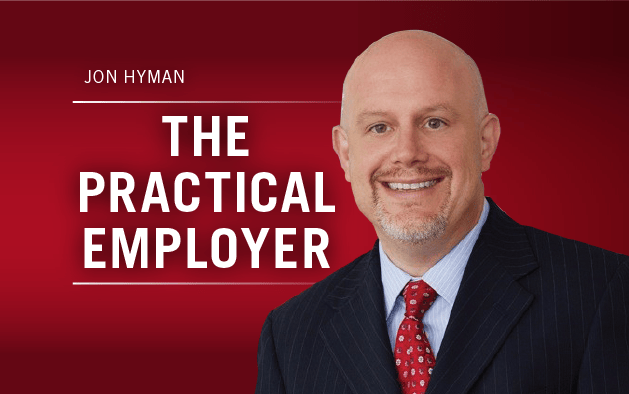Ford Motor Co.’s turnaround since hiring CEO Alan Mulally in 2006 is now considered legendary. When the former Boeing Co. executive arrived, the company was grappling with plummeting profits and a highly competitive culture that, some say, stood in the way of its success. Under Mulally’s leadership, the company returned to profitability and embraced a new corporate philosophy called “One Ford.” Felicia Fields, 48, group vice president of human resources and corporate services, oversaw that cultural transformation and recently shared her insights with Workforce senior writer Rita Pyrillis.
Workforce: Ford has had a reputation for its competitive, some say cut-throat, culture. How has that culture changed over the years?
Felicia Fields: I read your first question, and I’ve been here for 26 years, but I must say ‘cut throat’ didn’t resonate for me. I would say it was more individually focused vs. team-focused. ‘One Ford’ changed everything because it put everybody on the same plan with the same goals and really got everybody focused on delivering against the same plan. There were a lot of good people here, but they weren’t always working with same objectives, and that didn’t create the kind of performance you’d want. Not everyone was rowing in the same direction.
Workforce: What is the ‘One Ford’ philosophy?
Felicia Fields: It is a set of goals that we work toward, but the behaviors are just as important as the actual objectives. For example, the goals include ‘Fostering technical excellence,’ that’s the ‘F’ in Ford. The ‘O’ is ‘Own working together.’ The ‘R’ is ‘Role model Ford values’ and the ‘D’ is ‘Deliver results.’ Inside each of those goals are expected behaviors, and we live those behaviors. It has transformed our culture, and you can see and feel the difference.
Workforce: Corporate mottos and mission statements sound nice but don’t often spark a cultural transformation. How did ‘One Ford’ evolve, and what role did human resources play in that transformation?
Felicia Fields: It’s not just a clever saying. It’s everything we do, and it’s how people are taught to lead. HR had a big role in a lot of the coaching around that. The first year Alan was here he talked a lot about one team and one goal. He brought these behaviors from Boeing. Alan brought a lot of that can-do positive attitude, with a focus on respecting and listening to people and having a passion for the business and the customer.
We spent about a year collectively working with Alan, really crystallizing that philosophy and getting it down to a format, and that became the ‘One Ford’ card that we give to all employees. That was launched in January 2008. We revised all of our people management processes, our performance management, our leadership-development programs, our 360 feedback, everything. It’s how people were taught to lead, how people were recognized for good performance, and in talking about succession planning, we began looking at who exhibits those behaviors. We embedded ‘One Ford’ into all our people processes.
Workforce: What has been the impact on morale?
Felicia Fields: If you look at the 2006 employee opinion survey at that time it was about 63 percent favorable and, as of last week, it was 75 percent. The external benchmark is 70 percent. We also have an index that measures employee satisfaction. It’s been a steady climb year after year.
Workforce: Can you give me some real-life examples of how morale has improved?
Felicia Fields: One of the signature processes Alan brought to Ford is the BPR [business plan review] process. Every week for 2½ hours we meet and we cover every skill team in our company. We go around the world in a very transparent way and look at the health of the business.
We give each team a red, yellow, or green based on the status of where they stand against our business plan. We usually have about 10 to 15 [employee] guests who are there in the room with us or online because this is a global meeting. Employee after employee are allowed a chance to express any observations they have, and it’s wonderful reinforcement for the leadership team to continue this transparent and inclusive behavior because we hear from person after person what an incredible process it is, how transparent it is, how motivational it is to see that we’re dealing with the realities of our business very openly.
People who have been at the company for many, many years just talk about the contrast they’ve seen in the leadership team. … It’s very real. People can sense the difference, and it’s far more fun. One of our behaviors is enjoy the journey and that’s a big part of it. It’s a much better place to work.
Workforce: Like other automakers, Ford has had tumultuous relations with the United Auto Workers, but that relationship seems to have improved in recent years. Where do the company and UAW stand today?
Felicia Fields: Certainly among our major competitors, Ford has long enjoyed, since I’ve been here to be honest, a good relationship with the UAW. I think that by and large it’s been a constructive relationship and a pretty transparent one. We’ve moved to incredible levels of transparency and that probably started with Ron Gettlefinger (former UAW president) and really explaining the business challenges and what we had to do to keep jobs in America so I think it’s a good relationship that got better. It allowed us to get into some inventive agreements before others did and frankly I think it still continues to be one of our strengths. The way we partner with them (UAW) and respect their involvement and leadership and their thinking on how to stay competitive and how to do everything we can to create jobs here in the U.S. And that’s really speaking from a US perspective. We obviously have lots of relationships with unions globally and those are very different and some are more challenging than others.
Workforce: There seem to be fewer women in leadership roles in the auto industry today than in 2005, the year that some say was the peak of women’s influence in automotive leadership. What is Ford doing to promote women and minorities into executive positions?
Felicia Fields: We were lucky that we had Anne Stevens who was in a COO role in North America [she left in 2006]; Louise Goeser [retired in 2008] who was CEO in Mexico. There’s always been a heavier amount of women in HR and finance-type roles, and our desire is to continue to stock that pipeline, but we also want to get more women in operating roles and in general management.
Workforce: There’s been much speculation recently over retirement plans for Mr. Mulally, who is 67 and his potential successor. What are his plans and what is Ford’s succession-planning philosophy?
Felicia Fields: Just know that we are continually working on great internal candidates to be ready for his succession when that happens. And he’s committed to stay at least until the end of 2014. We have a strong succession-planning process. … I hope that if you see the transitions we make, they are very smooth and orderly and they make sense. I do give HR some credit for that.
Rita Pyrillis is Workforce’s senior writer. Comment below or email editors@workforce.com.






 One of its key plot lines involves sad sack employee Milton Waddams, who mumbles through the movie about his missing stapler and ever-moving desk. Amazingly, the company had laid off Milton years earlier without anyone telling him. When the company fixed a computer glitch that had accidentally kept him on the payroll, Milton finally cracked and burned down the office.
One of its key plot lines involves sad sack employee Milton Waddams, who mumbles through the movie about his missing stapler and ever-moving desk. Amazingly, the company had laid off Milton years earlier without anyone telling him. When the company fixed a computer glitch that had accidentally kept him on the payroll, Milton finally cracked and burned down the office.

